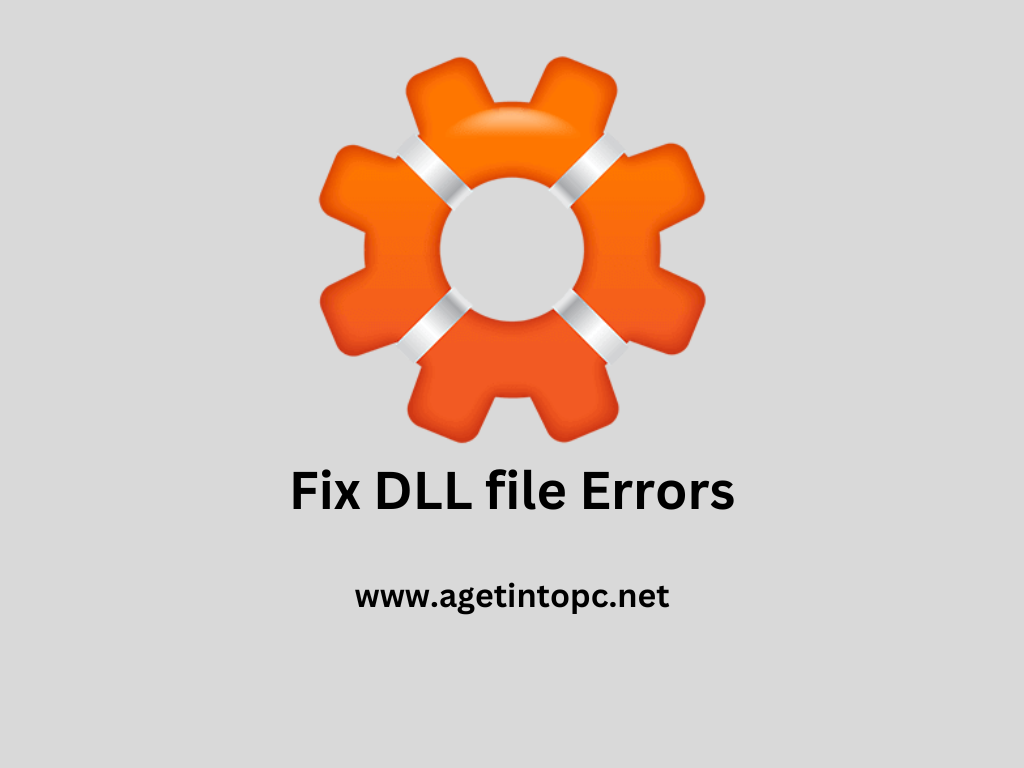DLL (Dynamic Link Library) files are an essential part of the Windows operating system as they contain code and resources shared by multiple programs. However, DLL files can sometimes be damaged or corrupted, which can lead to errors and problems on your computer. In this article, we will explore what DLL file errors are, their causes, and how to fix them.

What are DLL File Errors?
DLL file errors occur when a program cannot access the DLL file it is supposed to run. This can happen for a variety of reasons, including:
- DLL file is missing or deleted.
- The DLL file is corrupt or damaged.
- The DLL file has been overwritten or replaced with a different version.
- There is a problem with the registry, which is the database that stores information about installed programs and system settings.
Signs of DLL File Errors
DLL file errors can appear in a variety of ways, including:
| Error messages | When you try to start a program, “The program cannot start because [DLL file] is missing from your computer. Try reinstalling the program to resolve this issue.” You may see an error message like |
| Crashes | If a DLL file error causes a program to crash, you may see an error message or the program may quit unexpectedly. |
| Performance issues | DLL file errors can also cause slowdowns and other performance issues on your computer. |
| Missing features or functions | If a DLL file error is preventing a program from accessing a certain feature or function, you may find that it is not working as it should. |
Causes of DLL File Errors
There are several factors that can contribute to DLL file errors, including:
| Malware | Malware (short for malware) can cause errors by damaging or deleting DLL files. |
| Incorrectly installed or uninstalled programs | If you install or uninstall a program incorrectly, it can cause DLL file errors. |
| System problems | Operating system-related problems, such as a corrupted registry or a faulty hard drive, can lead to DLL file errors. |
| Hardware problems | Hardware problems such as a failing hard drive or RAM can cause DLL file errors. |
How to Fix DLL File Errors
Here are some steps you can take to fix DLL file errors:
- Restart your computer: Sometimes, simply restarting your computer can fix DLL file errors.
- Reinstall the program: If you are encountering DLL file errors when you try to start a particular program, uninstalling and reinstalling the program may fix the problem.
- Run a malware scan: If you suspect malware is causing DLL file errors, run a malware scan using a reputable antivirus program.
- Restoring from a restore point: If you have a restore point from before the DLL file errors started, you can try restoring your system to that point.
- Repair the registry: If the registry is causing DLL file errors, you can try using a registry cleaner to fix the problem.
- Check for hardware problems: If you suspect a hardware problem is causing DLL file errors, you can try running a hardware diagnostic tool or checking for hardware updates.
- Download the missing DLL file: If the DLL file is missing, you can try to download it from a trusted source and place it in the appropriate location.
Preventing DLL File Errors
While it’s not always possible to completely avoid DLL file errors, there are some steps you can take to minimize the risk:
| Keep your computer and programs up-to-date | Make sure you are running the latest version of the operating system and the programs you have installed. This can help fix any known issues and vulnerabilities that could lead to DLL file errors. |
| Install and uninstall programs correctly | Follow the instructions provided by the software manufacturer when installing or uninstalling programs. This can help prevent DLL file errors caused by incorrect installations. |
| Run a reputable antivirus | Protect your computer from malware by running a reputable antivirus and keeping it up to date. |
| Create restore points | Create restore points regularly so you have a fresh backup that you can restore in case of problems. |
| Be careful when downloading files | Be mindful of what you download and only download files from trusted sources to minimize the risk of downloading malware or corrupted files. |
Final Words
DLL file errors can be frustrating, but they can usually be fixed with the right tools and steps. By following the tips in this article, you can troubleshoot and fix DLL file errors and get your programs running smoothly again. It is important to take preventive measures, such as keeping your computer and programs up-to-date and being careful when downloading files, to minimize the risk of DLL file errors occurring in the first place.